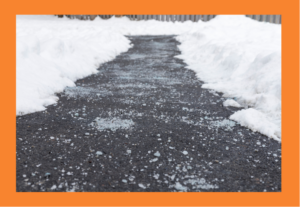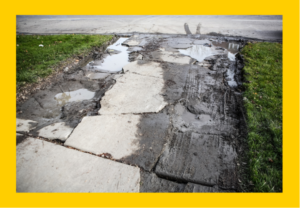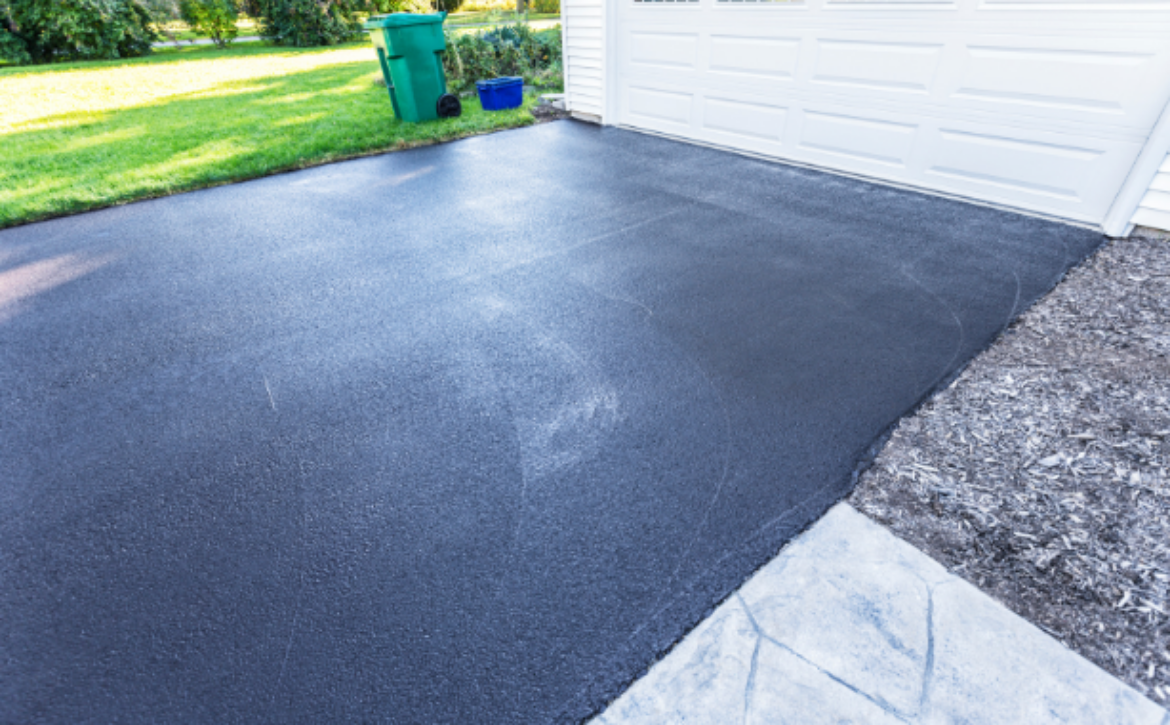Don’t Crack Up: Keep Your Driveway Looking Great
Keeping Your Driveway in Top Shape: Seal Coating, Salt, and Cracks
Your driveway might not be the most glamorous part of your home, but keeping it in good shape is crucial for both aesthetics and functionality. Whether it’s the scorching summer sun or the freezing winter cold, your driveway endures a lot. Let’s learn more about seal coating, using salt in winter, and how to handle those pesky cracks.
Seal Coating: The Secret to Longevity
Seal coating is like giving your driveway a protective shield. This liquid coating helps to seal small cracks, protect against oil stains, and shield the asphalt from the harsh effects of weather. But how often should you apply it?

Recommended Frequency: Most experts suggest seal coating your asphalt driveway every 2 to 3 years. This frequency depends on your driveway’s condition and your local climate. In regions with extreme weather changes, you might need to do it more often to protect against the elements.
Benefits of Seal Coating:
Protection from the Elements: Seal coating acts as a barrier against UV rays, rain, and snow, which can deteriorate the asphalt over time.
Improved Appearance: It gives your driveway a fresh, black look that enhances your home’s curb appeal.
Cost-Effective: Regular seal coating can extend the life of your driveway and save you money on more expensive repairs in the long run.
Salt in Winter: Friend or Foe?
When winter arrives, salt is often used to melt ice and keep driveways safe. But how friendly is salt to your asphalt?
 Pros of Using Salt:
Pros of Using Salt:
Prevents Ice Formation: Salt helps to keep ice from forming, reducing the risk of slips and falls.
Cost-Effective: It’s relatively inexpensive and readily available, making it a popular choice for many homeowners.
Cons of Using Salt:
Damage to Asphalt: Salt can accelerate the deterioration of asphalt by causing it to break down and lose its elasticity. Over time, this can lead to cracks and potholes.
Environmental Concerns: Salt can harm plants and grass, leading to environmental damage.
Handling Cracks in Cement and Asphalt
Cracks are a common issue in both cement and asphalt driveways. They can result from weather, heavy traffic, or simply age. Here’s what to check for and how to address them:
 Size and Depth:
Size and Depth:
Small Cracks (Less than 1/4 inch): These are usually cosmetic but can be sealed with a simple crack filler to prevent water infiltration.
Large Cracks (Over 1/4 inch): Larger cracks may indicate more significant issues. They should be cleaned, filled with a quality crack filler, and possibly patched with asphalt or concrete mix.
Location:
Surface Cracks: These are usually caused by weathering or slight settling. They can often be repaired with a sealant or filler.
Structural Cracks: If cracks are wide or seem to be spreading, this might indicate a structural problem. Consult a professional to assess and repair these issues.
Regular Inspections:
Conduct a visual inspection of your driveway at least twice a year. Look for any signs of wear and tear, and address small issues before they become major problems.
Taking care of your driveway might seem like a small task, but it’s essential for maintaining both its appearance and functionality. Regular seal coating, cautious use of salt in winter, and prompt attention to cracks will keep your driveway in excellent shape for years to come. So, roll up your sleeves, grab your sealant, and give your driveway the care it deserves!

